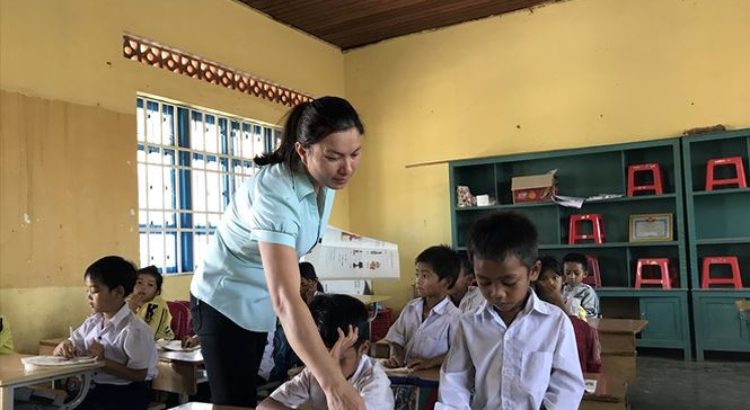Asia/ Vietnam/ 09.10.2018/ Fuente: english.vietnamnet.vn.
VietNamNet Bridge – Schools have repeatedly complained to the Ministry of Education and Training (MOET) about the lack of teachers, but the Ministry does not have the right to recruit teachers.
MOET’s Deputy Minister Nguyen Duy Thang said at an event held by the National Assembly’s Committee for Culture, Education, the Youth and Children on September 24 that 29 provinces want an additional 40,447 civil servants for the education sector this year. Thanh Hoa province alone needs 7,519.
According to MOET, schools now lack 80,000 teachers, including 43,000 for preschools.
The shortage has forced schools to employ teachers under short-term labor contracts. They are not official civil servants and do not receive salaries from the State.
Dang Thi My Huong, a National Assembly deputy, has raised questions about the responsibilities of MOET and the Ministry of Interior Affairs (MIA) for teacher shortage.
| 29 provinces want an additional 40,447 civil servants for the education sector this year. Thanh Hoa province alone needs 7,519. |
According to Huong, the teachers working under labor contracts signed with schools receive “starvation” salaries, about VND2 million a month.
The jobs are unstable because schools may terminate the contracts at any time.
In reply, MOET’s Minister Phung Xuan Nha said MOET is aware of teacher shortage, but the ministry does not have the right to recruit teachers. MIA is in charge of recruiting civil servants.
He said this was a difficult question to solve as schools want to recruit more teachers, while Vietnam is trying to cut out waste in organizations to ease the burden on the state budget.
Tran Hong Quan, deputy chair of Ca Mau province, also said that while the number of students increases every year (the population of the province increases by 10,000 each year), the number of teachers do not.
Van Thi Bach Tuyet, a National Assembly deputy from HCMC, commented that the solutions mentioned by MOET and MIA cannot settle the problem quickly. She suggested a mechanism under which cities and provinces have self-determination, with no need to wait for MIA’s approval on the personnel list.
Meanwhile, most National Assembly deputies agree that the problem lies in the recruitment scheme.
Nha said that under current laws, MOET and local education departments can only make suggestions, while it is MIA which makes final decisions in recruiting teachers.
Tran Thi Tam Dan, former chair of the National Assembly’s Committee for Culture, Education, the Youth and Children, said: “Those who use workers need to be given the right to recruit workers. It is unreasonable to assign teacher recruitment to MIA.”
“Only education establishments know how many teachers they need and what they have to do to settle the problem,” she said.
Fuente de la noticia: https://english.vietnamnet.vn/fms/education/209484/schools-that-lack-teachers-not-allowed-to-expand-staff.html

















 Users Today : 14
Users Today : 14 Total Users : 35460317
Total Users : 35460317 Views Today : 15
Views Today : 15 Total views : 3419043
Total views : 3419043